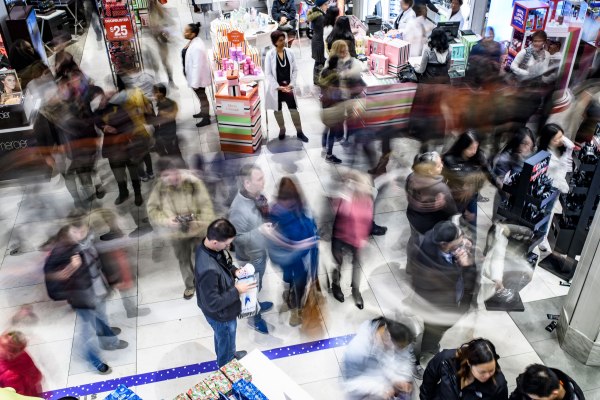The final figures for Black Friday online sales are in, and it’s another record-breaking day e-commerce in the U.S. Adobe says that shoppers spent $5.03 billion online in a race for bargains for themselves and to gift to others.
The figures come the day after Thanksgiving racked up a record $2.87 billion in online sales Adobe analyses 80 percent of online transactions to the 100 largest web retailers in the country to come up with its numbers. The final figure surpassed its own estimates, where were for $5 billion of sales.
“Shoppers capitalized on deep discounts on Black Friday, resulting in the largest Black Friday online ever,” said Taylor Schreiner, director of Adobe Digital Insights. “Conversion rates across all devices saw double digit growth throughout Black Friday.”
Schreiner said that “Small Business Saturday” — the latest invented shopping holiday for the season — is seeing online sales “trending slightly lower than expected.” However, in a month of “exponential growth”, Cyber Monday is projected to be “the largest US online shopping day in history”, with an eye-watering $6.6 billion in sales.
Still, it’s a drop in the ocean for single-day sales when compared to Alibaba’s $25 billion in sales during Singles Day this year.
The final totals are a rise of 16.9 percent compared to Black Friday 2016, and also show that online sales slowed down slightly throughout the day. At 7am Pacific, when sales were at $640 million, they were up 18.4 percent compared to a year ago. This would make sense, since people flock to physical stores to catch bargains there as the day went on.
“Many retailers are still focused on in-store sales for Black Friday,” said Linda Bustos, director of merchant strategy at e-commerce platform provider Workarea (which also works with hundreds of online retailers). “The physical retailer’s star is still Black Friday, but the consumer behavior is smoothing out because consumers are opting out of the physical hustle and bustle and moving more toward what’s easier: shopping on a couch.”
While we are collectively seeing a larger volume of sales, on a per-sale level things are actually holding steady. The average order value was $135, which is up just 0.9 percent over 2016’s Black Friday average.
The bigger shift is in how we are shopping. Purchases made on mobile devices have so far totalled a record 36.9 percent of all sales, and 54.3 percent of all site visits. This works out to just under $2 billion in sales. Smartphones accounted for 44.6% of visits and 26.0% of revenue.
“The big story this holiday season is in mobile shopping. Retailers know this is where the audience is now and are delivering better experiences. On both Thanksgiving and Black Friday, the gap between mobile traffic and revenue is closing,” said Mickey Mericle, VP of marketing and customer insights at Adobe. “Shoppers looking for discounts are getting better at using smartphones to quickly close the deal, and we are seeing better mobile conversion this season at over ten percent growth.”
Tablets, and the story of their decline in importance in shopping — especially as smartphones have gotten faster, easier to use and bigger — is an interesting trend. It’s also been going on for a while now, and if you could use its performance in e-commerce as a track for how much they are used overall, the picture is not that bright for tablets.
Another stat that should not come to a surprise to those who are familiar with consumer behavior on mobile concerns the platforms that are being used. iOS average order value continues to be higher than Android order value, and is also growing more: respectively it’s $127 (up 5.1 percent on 2016) and $112 for Android (up 1.5 percent). iOS also has a higher conversion rate of visits to purchases: 3.2 percent (up 10 percent YoY) versus 3.1 percent (up 8.1 percent YoY).
Collectively, e-commerce has generated $33.26 billion in sales so far in November (up 17 percent year-on-year), Adobe said.
Black Friday — and the subsequent pool of days that has spread around it — are significant for consumers because they get a chance to buy items at a deep discount to their normal prices. (Unless you subscribe to the school of “Hey, if you don’t buy anything, you get a 100 percent discount!”)
They are significant for online retailers because they set the pace and are a bellwether for the rest of November and December, traditionally the most important time of the year for their businesses to rack up holiday sales.
In terms of what is being purchased, Adobe highlights electronics like TVs and computers as two big sellers today, as are the Chromecast and Roku. Other top products it said include Apple AirPods, the Sony Playstation VR, the Nintendo Switch and Xbox One X.
Updated with final Black Friday figures. We’ll add more as we find them.
